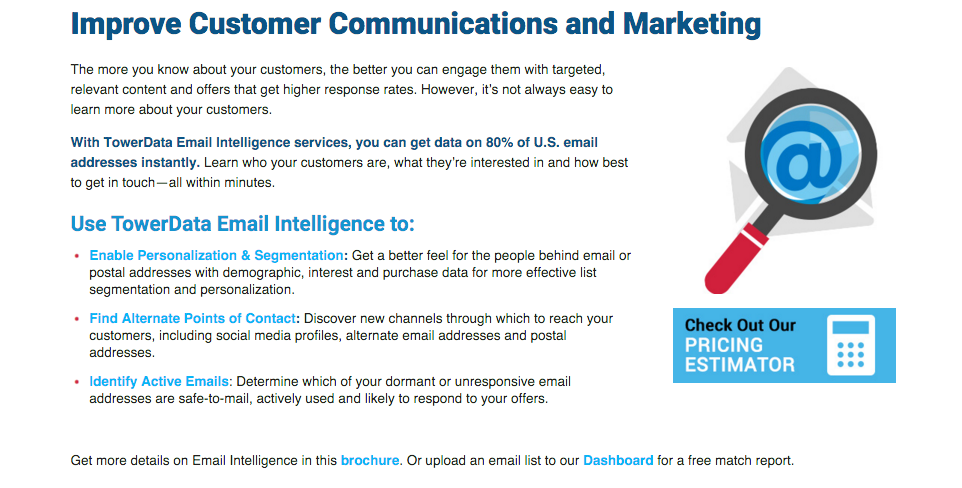
Crummy Leads? 5 Lead Generation Fixes For Your Technology Company

 There is one thing all technology companies need to survive in this ever-evolving, highly competitive marketplace: leads—and lots of them. Unfortunately, successful lead generation is also one of the industry’s greatest challenges. According to a survey of more than 800 marketing professionals in software and technology, generating high-quality leads is the No. 1 challenge facing B2B tech businesses—followed by converting leads into customers.
There is one thing all technology companies need to survive in this ever-evolving, highly competitive marketplace: leads—and lots of them. Unfortunately, successful lead generation is also one of the industry’s greatest challenges. According to a survey of more than 800 marketing professionals in software and technology, generating high-quality leads is the No. 1 challenge facing B2B tech businesses—followed by converting leads into customers.
In other words: If your leads suck, then you’re not alone.
But what about the technology businesses experiencing wild success and rapid growth? What are they doing to fill their pipeline with well-educated, deep-pocketed, ready-to-buy prospects? Is it all a game of luck? Sorcery? Voodoo?
Not exactly. If you’re not getting the kinds of leads you need to increase revenue and exceed your goals for 2016, there’s a logical reason. Today, we’re going to help you determine what’s holding you back.
Here are a few things you need to consider to improve lead generation.
Don’t Ignore Your Email Strategy
Over the past few years, there has been a debate in the marketing world about whether email is still effective, and whether it has a place in the future at all. Our personal and professional inboxes are often stuffed to the brim with messages we’ll never read from brands we may eventually forget. Email is so saturated, spending time on your email strategy is probably just wasted effort, right?
WRONG! If anything, 2015 was the year of disproving email naysayers. Seventy-two percent of consumers prefer brands communicate via email than any other communication method, a recent MarketingSherpa survey found. Radicati projects that there will be more than 246 billion business and consumer email addresses by the end of 2019.
In short, your email strategy is essential to generating and nurturing leads, so give it some love. Not sure how to get started increasing email engagement and stand out from the noise? Try these simple email tests.
Optimize Your Resources and Budget
When asked what is the No. 1 barrier to B2B lead generation success, respondents to a B2B Technology Marketing Linkedin community survey cited lack of resources in staffing, budget and time as the most common answer.
This isn’t surprising—lead generation takes a lot of time and effort. So, how do you increase your budget to fuel your lead generation? By increasing your revenue. And, how do you grow your revenue? By obtaining better leads and closing more deals. It’s the classic chicken-egg scenario.
Unfortunately, there’s no easy solution—but finding balance is critical. If you don’t have the time and staff to dedicate to lead generation, supplement your internal marketing endeavors with services from an inbound marketing agency skilled in the technology industry.
Make Your Value Proposition and Offers Crystal Clear
When assessing a product or business, three practices turn off audiences immediately:
- Vague language
- Bad: Our app will improve your company’s efficiency.
- Good: Our app will improve operational efficiency by detecting the slowest points in your product development process.
- Lack of obvious value
- Bad: Our product outperforms our competitors’.
- Good: Unlike similar products, our solution is fully customizable and includes complimentary 24-hour tech support.
- Over-promising
- Bad: This software will help you double your revenue this quarter.
- Good: On average, our customers enjoy a 100 percent ROI within three months.
When a potential customer arrives on a landing page for an offer, they should know exactly what they’re going to receive in exchange for providing you with their information, what problem or problems you’ll solve and why your solution trumps your competitors.
And while it’s important to use enticing language, it’s never OK to lead prospects astray. In addition to setting them up for disappointment, you’re also risking permanently losing their trust in your brand.
Take this landing page by email data service provider TowerData, for example. The copy clearly states what the service offers, the value customers will enjoy and realistic results customers can expect.

Ensure Sales and Marketing Work In Tandem
Lead generation is one of the many scenarios in which silos are ineffective and dangerous to your company’s future. While technology companies are often more collaborative than other industries, it’s not uncommon for sales and marketing teams to segregate themselves. Unfortunately, this results in poor communication and a misunderstanding over what constitutes a “good lead.”
To improve the process and ensure teams function in unison, your sales and marketing departments should both be well-versed in (and agree on):
- Buyer personas
- Buyer’s journey
- Lead scoring
- Audience segmentation
- Lead nurturing
- Lead transfer and assignment
- Post-sale marketing
Additionally, be wary of the language you use to describe the process to prevent siding and blame games. “It's not a marketing funnel and a sales funnel—it's just the funnel,” says VP of Sales and Marketing at ShopKeep, Brian Zang. “Stop ‘tossing leads over the fence’ or ‘handing them off’ to sales. It's just the funnel and conversion can require marketing and sales touches at every step. Conversion is best measured by revenue generated and marketing and sales are both responsible.”
Revisit Your Demand Generation Strategy
It’s entirely possible the sole reason you’re not getting the types of leads you want is because you’re not getting your message in front of the right people, in the right place at the right time. More often than not, this is because your demand generation tactics are outdated and ineffective.
So how can you brush off and revive your demand generation strategy? Consider the following:
- Where does your audience spend their time? Just because Facebook is the largest social network doesn’t mean it’s the best place to market your product. Instead, LinkedIn advertising may yield greater returns.
- Who are the biggest influencers? Is there a particular thought leader your target audience follows? Leveraging this influence can lend instant credibility to your brand. A simple guest post or podcast mention can drive instant traffic.
- What events can you leverage? In the tech community, there is no shortage of conferences and events all year-round—such as Techweek, SXSW Interactive or local small business expos. Participate in speaking engagement opportunities, then record and release as webinars for additional exposure.
- Are your buyer personas still correct? While you may have been thorough in researching your buyer personas, it’s always a good idea to revisit your findings and collect additional information. A short conversation with a current client about who was involved in the decision process may help you unearth another key persona worth targeting.
- When is the best time to reach your prospects? Check out historical data to determine when customers are most likely to engage with your messages. Discover the best time to send emails, display PPC ads and post blogs.
Lead generation is the No. 1 B2B tech challenge for a reason: It requires constant evaluation and optimization and, often, it can feel like you’re attempting to solve an impossible riddle. The good news is, as data acquisition and analysis become more sophisticated, identifying patterns in lead generation will become easier. The more effort you put in to revisiting your strategies, the more likely you are to find the perfect formula for record-breaking growth.


